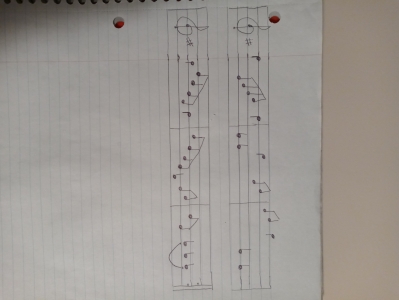Welcome to our forum. A Message To Our New and Prospective Members . Check out our Forum Rules. Lets keep this forum an enjoyable place to visit.
Currently working on errors from the latest (SimplePress) forum update. Many issues have been resoled and others are being worked on. Thank you for your patience.
 Topic RSS
Topic RSS



 (3 votes)
(3 votes) Member
 Offline
OfflineRegulars
 Offline
Offline






Regulars
 Offline
Offline








Regulars
 Offline
Offline








Member
 Offline
OfflineRegulars
 Offline
Offline






Regulars
 Offline
Offline








Regulars
 Offline
Offline






Regulars







ELCBK said
Pretty sharp!
Like not seeing the forest for the trees!
...now, who did Bach steal it from?
He neither composed it nor claimed credit for it, it turns out. It was attributed to Bach for centuries because it was one of a large number of short keyboard pieces found in the Anna Magdalena Bach notebook, but turns out to have been composed by his contemporary Christian Petzold. An original manuscript by Petzold was discovered in the 1970s.
Regulars







BTW, misattribution used to be quite common, and was mostly done by publishers who would attribute an obscure piece to a famous composer in order to try to sell more copies.
Another notable example is Brahms's "Variations on a Theme by Haydn." The theme was an obscure piece titled "Chorale St. Antoni" that had been published as Haydn's, but it turns out to have been spuriously attributed to Haydn and was probably (but not proven to be) composed by Ignaz Pleyel. Today, the Brahms piece is often referred to as the "St. Anthony Variations" instead.
Regulars
 Offline
Offline






Regulars
 Offline
Offline








Regulars
 Offline
Offline





It's an interesting thread possibility.
Two more examples of misattribution/forgery are the Haydn/Hoffstetter
(err, bizarre visual - I guess I'd better watch it all the way through to make sure it doesn't get risqué, lol!)
And the famous Albinoni Adagio: -
The history of it is fascinating: -
https://en.wikipedia.org/wiki/.....in_G_minor
I would guess that on balance the likelihood is that there was a fragment but it was stolen and Giazotto didn't want to pay up. Otherwise it would be pretty good for a one-hit wonder.
For what it's worth, which is little
"However, a discovery by musicologist Muska Mangano, Giazotto's last assistant before his death, has cast some doubt on that belief. Among Giazotto's papers, Mangano discovered a modern but independent manuscript transcription of the figured bass portion, and six fragmentary bars of the first violin, "bearing in the top right-hand corner a stamp stating unequivocally the Dresden provenance of the original from which it was taken". This provides support for Giazotto's account that he did base his composition on an earlier source."
Andrew
Verified human - the ignominy!
Regulars
 Offline
Offline










 Log In
Log In Register
Register





















 Online
Online
 - Emily
- Emily
 - Emily
- Emily

